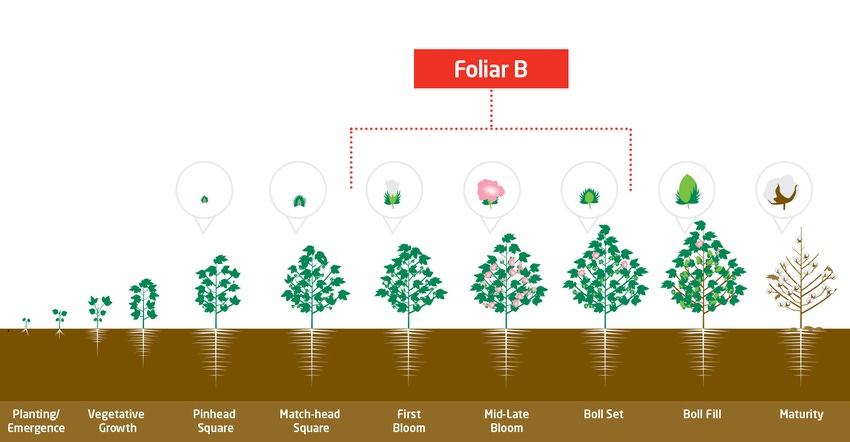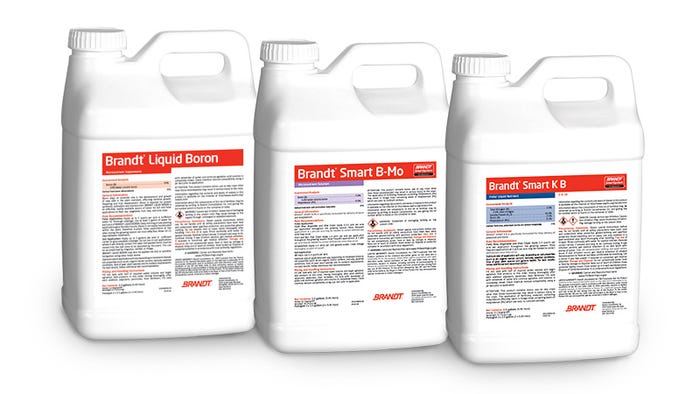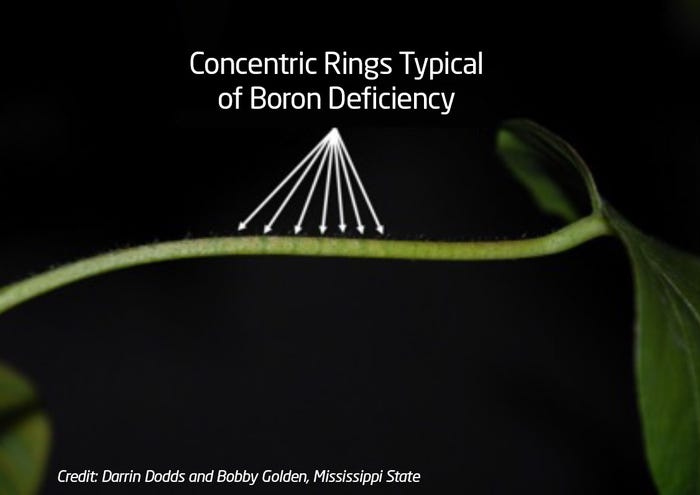June 5, 2021

Sponsored Content
Peak Demand for Boron in Cotton is from Flowering through Boll Development
Agronomics / Background
Boron is essential at all stages of plant growth; however, it is critical from flowering through fruit development. Boron aids in square retention and boll set, which is even more evident with today's fast-fruiting and high-yielding varieties. Additional benefits from boron include improved translocation of sugar to the fruit and stronger, well-developed fibers.
Conditions Leading to Boron Deficiencies
Boron is very water soluble and deficiency is related to soil type, organic matter content and timing of lime application (soil pH). Boron availability decreases with increasing soil pH. Deficiencies are more likely to be a problem in sandy soils and sandy loams. Boron uptake also decreases under drought conditions.
Desired Boron Tissue Test Values
The desired range for in tissue test for boron is between 25 to 60 ppm prior to or at bloom stage.
Key Application Timings and Rates
Key timings for foliar sprays of boron are during flowering through boll development. For foliar applications, supply sufficient boron to account for uptake inefficiencies and to offset leaching losses. The recommendation is to use 0.5 pounds per acre of actual boron applied at early bloom or 0.25 pounds per acre at early bloom and another 0.25 pounds per acre about two weeks later. On deep, sandy soils, split foliar applications ensure availability during the critical bloom and boll-filling periods. Soluble boron sources are generally compatible with mepiquat chloride and most insecticides and fungicides if enough water is used to dissolve the compound
Key BRANDT product foliar application include: BRANDT Smart B Mo, BRANDT Smart K B and BRANDT 10% Boron.

Boron Deficiency in Cotton
Boron deficiency is more common in younger leaf tissue toward the top of the cotton plant. Deficiency symptoms may appear as distorted and/or stunted terminals; abnormal uppermost leaves, and aborted flowers. Additional deficiency symptoms may appear as “coon-tailing” on the petioles and/or petioles that are shorter and thicker than those in healthy plants. In severe situations, flower abortion and boll shedding may occur which can result in excessive vegetative growth and reduced yields. An example of “coon-tailing” can be seen in the image below.

About the Author(s)
You May Also Like




